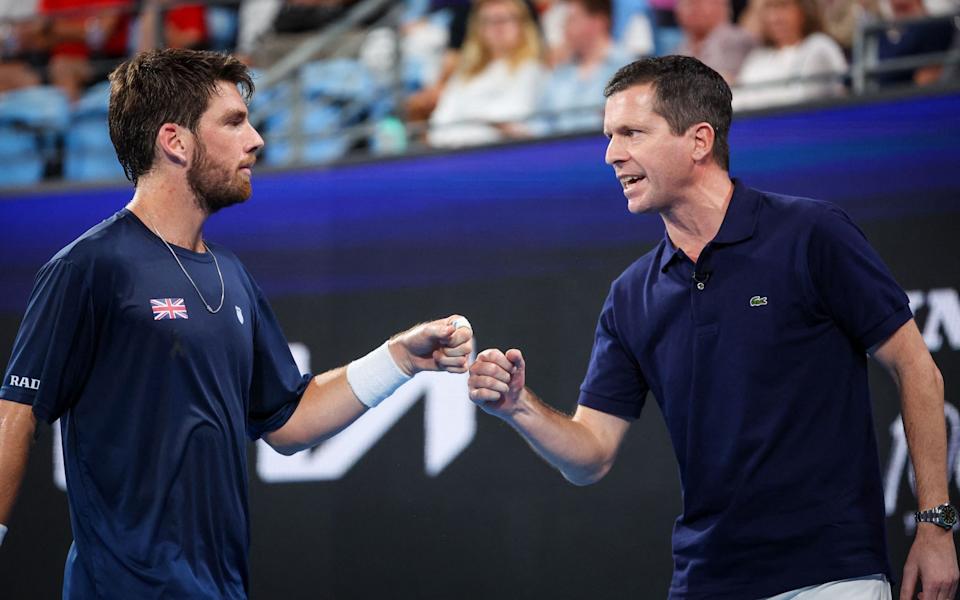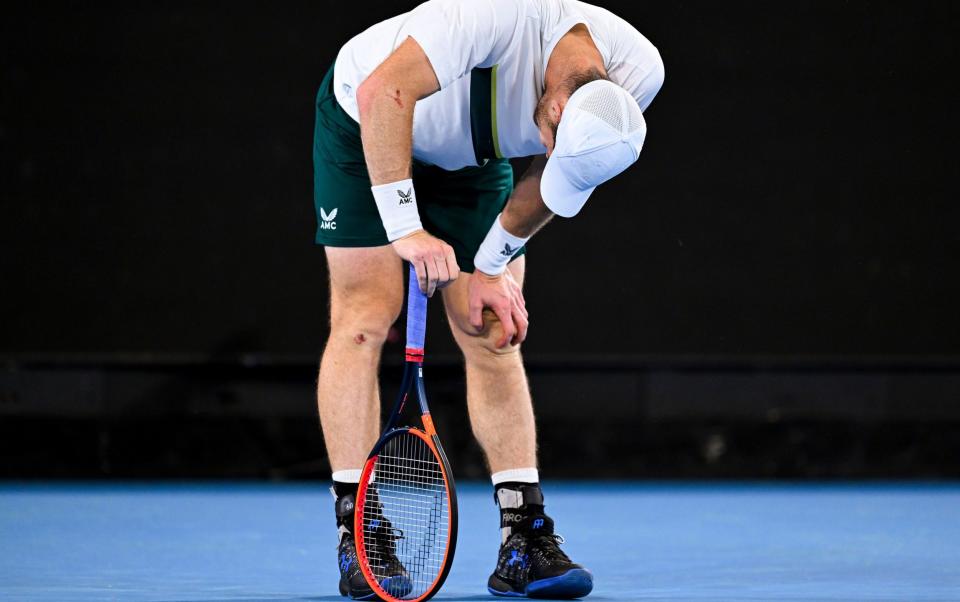'Super fluffy' tennis balls are causing injuries fear leading players

The latest scourge of tennis? It’s big, fluffy balls, which the Russian world No 7 Daniil Medvedev has described as being so heavy that they feel like “apples” on the racket.
In Medvedev’s opinion, these Dunlop balls – which were also criticised by Rafael Nadal and Andy Murray during January’s Australian Open – are causing wrist, elbow and shoulder injuries among the leading players.
What’s more, Medvedev believes that the balls travel so slowly that they are making matches increasingly interminable. On Tuesday, his dominant 6-4, 6-2 win over the unheralded Matteo Arnaldi took 1hr 31min. “That's almost a nonsense, to be honest,” Medvedev told reporters.
“When the balls are at their lowest point” – which comes towards the end of their nine-game lifespan – “it felt like neither me nor him could make a winner,” said Medvedev.
This same issue of ever-longer match times was recently raised by Tim Henman, the former British No 1 who now sits on the All England Club committee. Yet Henman thinks that the onus lies with a different part of the tennis ecosystem: the chair umpires, whom he feels are taking too long to start the 25-second shot-clock.
“I was on the court a lot at the United Cup,” said Henman, who captained Great Britain’s team for that build-up event ahead of the Australian Open “I really noticed it with the Cam Norrie-Rafael Nadal match, which Norrie won 3-6, 6-3, 6-4. It was a good match, but one that should have taken 2hrs max. It took 2hr 45min.”

Medvedev told reporters in Dubai that his comments could hardly be considered sour grapes when he has just won last week’s event in Doha – where he beat Andy Murray in the final – using these same Dunlop balls.
“I knew it’s gonna be tough, especially with the conditions here, quite slow with balls that get super, super fluffy. So at one moment it’s like you feel like you’re throwing, I don’t know how to call it in English, but when you throw a big heavy ball," said Medvedev.
“The new balls for, like, three games [are lively],” he added. “In Russia we call it 'sky and ground', they are completely different. It takes two games to get used to them … but then they're dead again.
“In my opinion, that’s maybe even boring. I cannot do anything with the ball. I hit back in the middle, he hits back, whoever misses, the legs are burning. It's a little bit strange in my opinion. Again, if I'm the only one, that's only my problem. I just feel like that's not good for the body, and that's important.”
Medvedev is certainly not Robinson Crusoe on this subject. During his pre-tournament press conference at January’s Australian Open, Nadal was asked about the pace of the courts and responded with a diatribe about the ball.
“They say it’s the same, but the ball is worse quality, without a doubt,” he said. “I think it's a ball that doesn't get the same spin as usual. After a couple of hits, the ball lose the pressure. It's more difficult to hit with the right spin.”
As with any shift in equipment, certain players feel the pinch more than others. In Nadal’s case, his topspin is his unique asset – and one that is negated by flatter balls. Whereas world No 1 Novak Djokovic, who hits with less spin and enjoys grinding his opponents down, said on Tuesday that “I like the balls. It’s not as easy to make a one-two play, quick points and winners. You have got to earn the points, run more and work more.”
According to Medvedev, the extra effort required to force the old Dunlop balls through the court is causing physical aches and pains in the locker-room. “I see Rune, Tsitsipas, Korda, all wrist, elbow, shoulder. These balls get very fluffy and it's a big shock to play them with your racket.” Medvedev added that he is doing extra physio on his wrist every day, having felt pain there during the Australian Open.
The duration of matches was also a serious issue in Australia, to the point where Andy Murray finished his five-set thriller against Thanasi Kokkinakis at an absurd 4.05am.

Afterwards, during a brief press conference under the stadium at 4.30am, Murray said “It felt like there was no pressure in the ball, flat almost. So it's just difficult to hit winners once you're in the rallies. I think there was a 70-shot rally yesterday or multiple 35, 40-shot rallies, which is not normal.”
These lengthy rallies may also play a part in umpires being slower to start the 25-second shot-clock. Everything in tennis is pointing towards slower matches, which in turn could threaten the continued viability of best-of-five-set matches during grand-slam events. With this concern in mind, Henman told Telegraph Sport that there must be a more consistent application of the shot-clock rule.
“The guidelines to umpires say ‘Don’t start until you’ve called the score,’” Henman explained. “But they also say ‘Take into account where the player is on the court.’ And with so many players using the towel now between points, the umpires aren’t starting the clock until 10 seconds after the last point has finished.
“You do the maths – that’s five or six points in an average game, with 35 seconds or more in between, and it adds up. You look at the scheduling in Australia and it’s not good for anyone to be finishing at 3am or 4am.
“The shot-clock has slowed a lot of players down,” Henman concluded. “We wanted to make things faster and more transparent, but it hasn’t worked. It needs to be addressed. We’re seeing greater collaboration and continuity between the organisations, but we still need a forum to discuss this and it doesn’t exist. We need to talk about it.”

